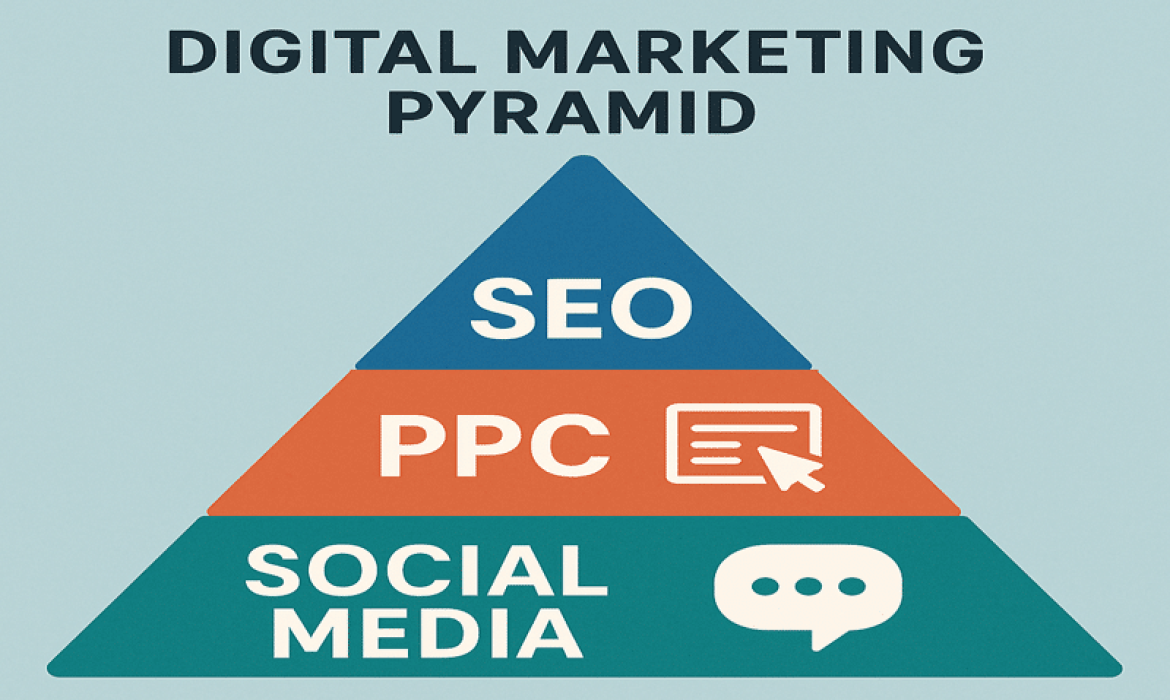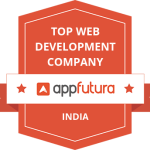Digital marketing today is anything but one-dimensional. One strategy doesn’t cut it. One platform doesn’t carry the weight. One campaign doesn’t seal the deal. That’s where the idea of the digital marketing pyramid comes in. Think of it as a layered structure, with each level doing its job to support the next.
At the base, there’s SEO. Then comes PPC, followed by social media, email, and all the stuff that brings it all together. It’s not just a strategy — it’s a system. Let’s break this pyramid down piece by piece. You’ll see how each level helps businesses grow stronger, louder, and smarter online.
Everything Starts With a Solid SEO Foundation
Let’s start at the bottom — because that’s where it all begins. Search engine optimization, or SEO, is the backbone of digital marketing. It’s what gets your website found when people go searching. No tricks. Just visibility.
If your business isn’t showing up on Google, you’re invisible to a lot of potential customers. And SEO is how you fix that. But it’s not just throwing in a few keywords and hoping for the best.
Real SEO work involves:
- Researching what your audience is actually typing into Google
- Writing content that answers real questions
- Ensure your website loads fast and works on phones
- Getting other reputable websites to link back to you
There’s also technical stuff — like optimizing your site’s structure so Google can crawl and understand it. SEO doesn’t give you overnight results. But the payoff is long-term. Once your content ranks, it can keep bringing in traffic for months — even years.
That’s why SEO forms the base of the pyramid. You build here first. Everything else stacks on top.
PPC: When You Need Fast, Targeted Results
While SEO takes time, PPC is more like flipping a switch. Pay-per-click advertising lets you skip the line. You bid on selected keywords, and your ad appears right at the top of Google, even above the organic search results.
But here’s the catch — you pay for every click. That means your strategy needs to be tight. You don’t want to blow your budget on empty traffic. Every click should have a purpose.
Here’s what makes PPC powerful:
- You choose who sees your ads
- You control the daily budget
- You can test different headlines and offers
- You get instant data to see what’s working
Platforms, including Google Ads and Bing Ads, are popular. But PPC also lives on Facebook, Instagram, LinkedIn, and even YouTube.
PPC works best when paired with strong SEO. While SEO slowly builds trust with search engines, PPC gives you immediate visibility. It’s like planting seeds and watering them while also buying fresh fruit from the store — smart brands do both.
Social Media: The Middle of the Pyramid and the Heartbeat of the Brand
Now we move to the middle layer. The one that’s most public. Most dynamic. And often, the most misunderstood. Social media!
This isn’t just about posting pretty pictures or tweeting clever quotes. Social media is where brands go to build personality, create loyalty, and start real conversations.
Each platform has its own vibe. That matters.
- Instagram is all about visuals, reels, and lifestyle
- Facebook is where communities form
- Twitter (or X) is great for fast updates and reactions
- LinkedIn is for thought leadership and networking
- TikTok favors creativity and spontaneity
Social media isn’t about being everywhere. It’s about being where your audience actually spends their time.
The key to success?
- Post consistently (not constantly)
- Respond to comments and messages
- Use video — it performs better across all platforms
- Stay real and human (no one likes robotic content)
And here’s the truth — followers don’t equal customers. But engagement? That does. People support brands they feel connected to.
Social media puts a face to your business. It makes you relatable. And in today’s world, that counts more than ever.
Email Marketing: Quiet, Powerful, and Seriously Underused
Most people scroll past ads. They skip posts. But email? They check it. Daily. Sometimes hourly. That’s why email marketing is still one of the most reliable tools in digital marketing. And yet, so many businesses sleep on it.
Emails aren’t just for promotions. They’re for updates. News. Value. Here’s what a good email campaign should do:
- Provide something useful (a tip, an offer, a reminder)
- Be short and easy to read
- Looks good on phones
- Lead people to take action (click, reply, shop, sign up)
It’s not about blasting your list every day. It’s about showing up with relevance. Smart email strategies segment audiences. They personalize messages. And they deliver the right message at the right time. Done right, email builds relationships. And those relationships convert.
Influencer Marketing: Trust That Can’t Be Bought — But Can Be Shared
People trust people. Not ads. Not logos. Not corporations. That’s why influencer marketing is growing so fast. When people follow and share your product, it feels authentic.
But here’s the trick — don’t chase vanity numbers. A beauty influencer with 3 million followers won’t sell your tech gadget. But a niche creator with 30,000 loyal fans might.
Micro-influencers often have better engagement. Their audience is tighter, more trusting, and more likely to act.
To make influencer partnerships work:
- Find creators aligned with your brand
- Let them tell the story in their voice
- Avoid over-scripting the message
- Measure the impact (clicks, traffic, mentions)
This layer of the pyramid isn’t just about reach. It’s about trust. And trust is the hardest thing to buy online.
Data and Analytics: The Top Layer That Holds It Together
All of this means nothing if you don’t track what’s working. Analytics sits at the top of the pyramid — not because it’s the flashiest, but because it helps every other layer perform better.
Without data, you’re just guessing.
Use it to answer questions like:
- Which blog posts bring the most traffic?
- Which ad campaign converts the best?
- When do people open your emails?
- Where are your visitors coming from?
Tools like Google Analytics, Facebook Insights, and heatmaps help you see the real picture. But it’s not about drowning in numbers. Focus on the data that ties back to business goals.
Want more leads? Watch your conversion rate. Want brand awareness? Measure impressions and shares. Analytics closes the loop. It shows what to improve, what to cut, and what to double down on.
This Pyramid Doesn’t Stand Still
Here’s something no one tells you — this pyramid shifts. New platforms emerge. Old tactics die. Algorithms change. People change. That means your strategy needs to move, too.
What should you watch next?
- Voice search is picking up speed
- Short-form video is taking over
- AI-driven content tools are everywhere
- Customers expect faster, more personal experiences
You don’t need to chase every trend. But you do need to adapt and evolve. What worked six months ago might not work now. And that’s okay — the pyramid is flexible. That’s the point.
The Geek Tech Approach: Strategy That Builds Up, Not Out
At Geek Tech, digital marketing isn’t a guessing game. Our team believes in building from the ground up. Solid SEO. Smart PPC. Engaging social content. Powerful email campaigns. And always tracking the results.
We don’t use shortcuts. Our experts use real strategies that deliver real growth. If you’re serious about your digital presence, you need a team that understands every layer of this pyramid — and how to make it work for your business.
In The End
Here’s the truth. You can’t build a strong online presence on one tactic alone. Not anymore. The digital space is too loud, too fast, and too competitive. But when you build layer by layer, using strategies that actually talk to each other, that’s when the results start to show.
Strong SEO brings traffic. Smart PPC brings visibility. Relatable social content builds trust. Clear emails keep customers close. And data helps you improve it all. That’s the pyramid. And once you build it right, you won’t just be online — you’ll stand out.









